When's the last time you made a cross-country road trip? What kinds of preparations did you make? On most of our excursions, my wife holds the fort as navigator. She does an amazing job negotiating the complications of looking ahead, working us through the maze of weather, road construction, accidents, hotels, restaurants, gas stations, and other needs.
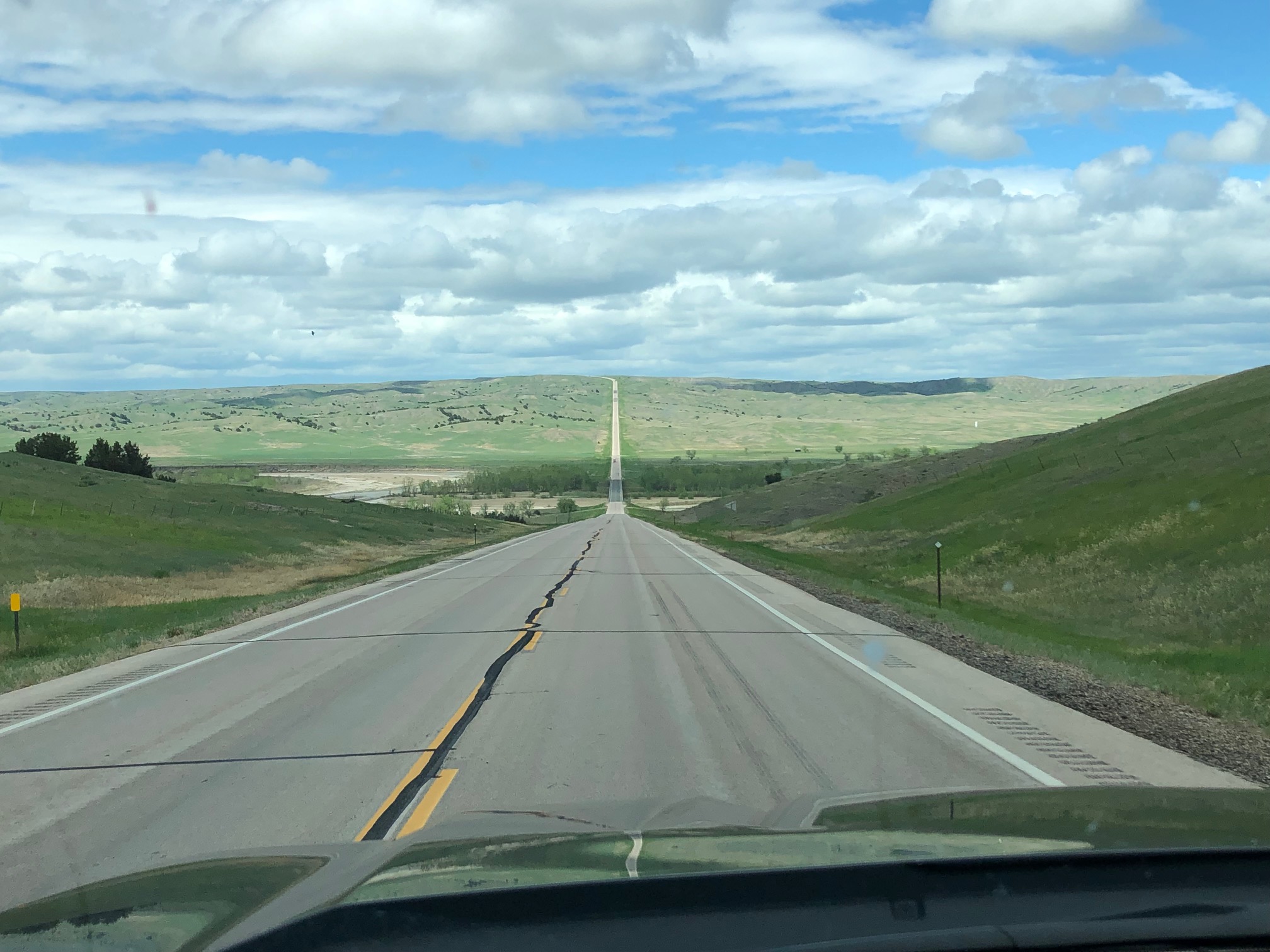
We share responsibilities with initial planning and supply preparations. She usually makes sure the GPS system is updated but, even with the latest info, there can still be issues. Sufficient planning for months-long treks in the mid-1800s wasn't just important, it could be the difference between life and death. During those days, it was important to have a solid grasp on as many travel details as possible beforehand. Such was the reason that the ex-Missouri governor, Lilburn W. Boggs wrote a fairly detailed overview in May of 1847 as to what he recommended for the trip to California. Below is an article from the September 22nd issue of The St. Louis Republican with those details...

Page one of the 1847 paper which included the Lilburn Boggs' article and information about traveling to California.
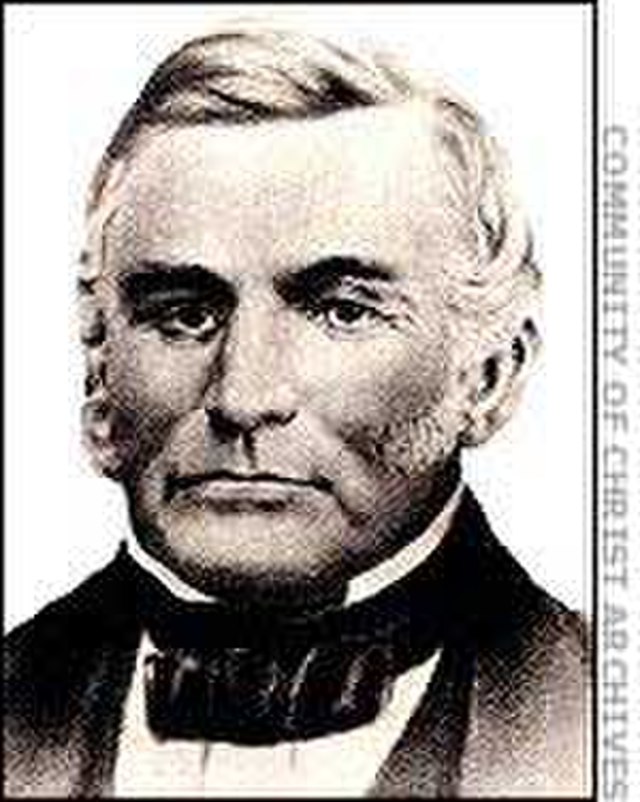
DEAR SIR: For the benefit of those persons who may wish to emigrate to this country, and in order that they may be enabled to reach here in time, and to avoid many of the difficulties attending a trip of this kind to those who would be strangers to the route, and to the best mode of traveling, &c., &c., I have concluded to address you a few lines, for the benefit of those it may concern.
In the first place, prepare good strong two or four horse wagons, and I would prefer crooked beds, or frame beds - obtain a sufficiency of good, stout oxen, say from five to seven or eight years old; young cattle are not so good; large, strong, active oxen are the best - and be sure to have at least two extra oxen to each wagon, or, in other words, add about fifty per cent of team at the start. Do not have your wagons too heavy, (such as Modie made for me are about the right size) they are worth something after you get them here - have good double covers. A good old-fashioned tent, one with necessary tent poles, and iron pins to fasten it down, instead of wooden pegs. Provide a sufficiency of provisions - say fifty pounds of bacon (middlings) to the person, and about two hundred pounds of breadstuff to each person, large and small; this two hundred pounds will include flour, hard bread or crackers, and corn meal will keep all the way, and you ought to start with a good supply of it. A cask of coffee to each family, and a due proportion of sugar - dried fruit, beans, a good supply of hog's lard, and plenty of soap; the last article is important. Rosin and tallow make the best article for greasing your wagon wheels, and a good jack-screw is highly necessary - no man ought to start without one. Bring a number of good milch-cows. American cows are very valuable here and it is the finest country in the world for butter. Bring a good large cedar churn with iron hoops and plenty of milk vessels. You will need salt, say a bushel to each family will be enough, merely for your bread and fresh meat, the cattle need none or very little. See that your axletrees are made of good timber, and that your slides and coupling pole are well ironed - have an extra king bolt to each wagon, and extra tongue-bolts and linch-pins.
There are a number of other little matters, which every man's judgement will point out to him, which will add much to your comfort and not be in the way. A good rifle, powder, lead, and caps, pistols if you choose, and one set of plough irons - diamond plough and a frow. A small supply of medicine is highly necessary, such as is used in fevers, diarrhea, sprains, etc. Provide plenty of good warm clothing and bedding, feather bedscan be bought very easily, and are very useful when you get here; cooking vessels, such as a family needs in the States, are the best to bring, though not too many of them. A good ten gallon cast iron kettle or pot to make soup in after you get here, and to boil clothes in on the road, and a good wash tub; a good Dutch oven and lid to bake bread; and as to sheet iron camp kettles, they are but of little use - a good five gallon water keg to each wagon, iron-hooped and painted - painted or tin buckets for water. Start with a good supply of shoes or coarse boots, and any goods you bring for clothing, let them be woolen - cotton goods can be had here, and woolen are more necessary.
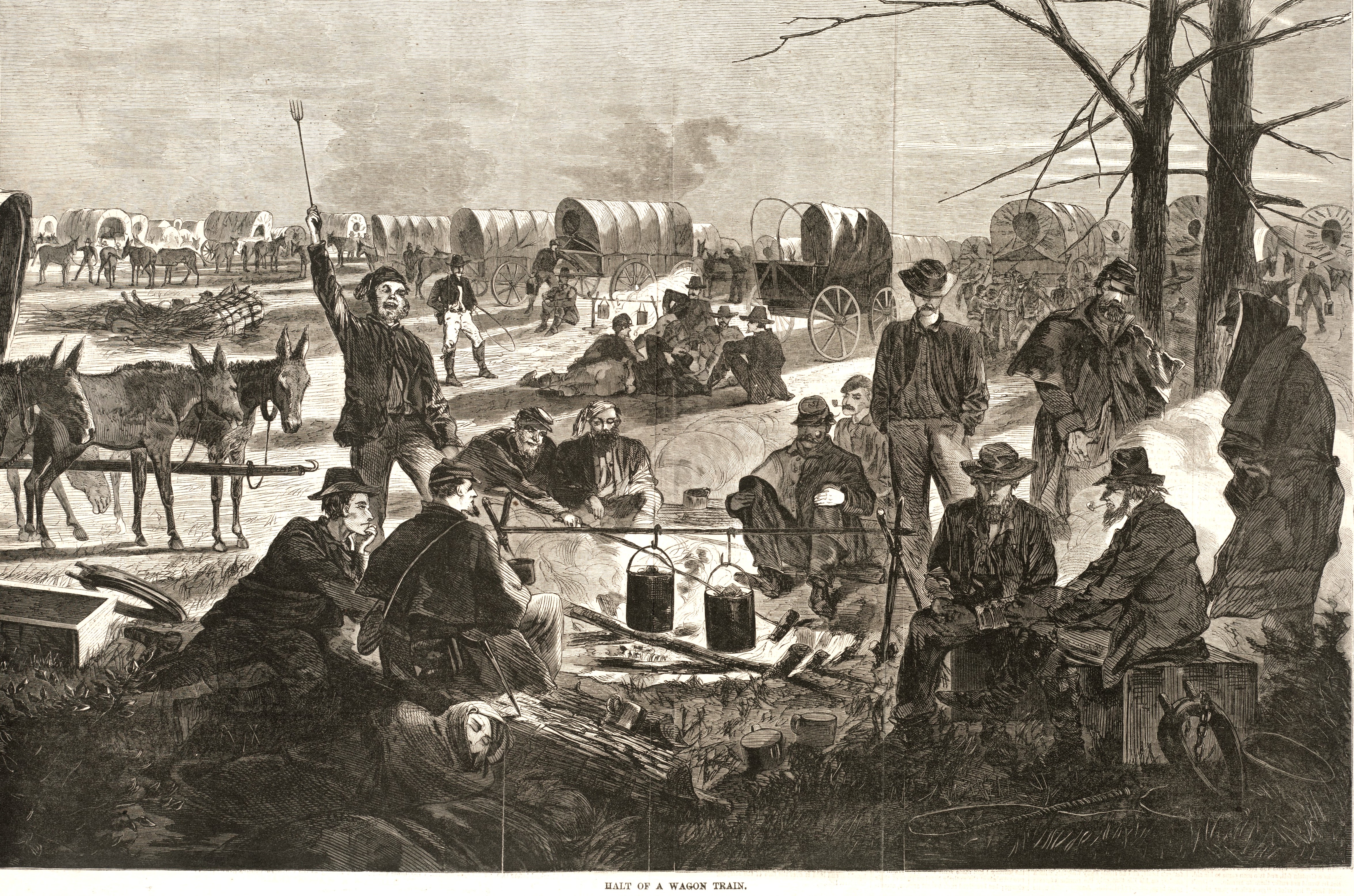 .An 1864 Harper's Weekly illustration showing a wagon train at rest.
.An 1864 Harper's Weekly illustration showing a wagon train at rest.
After getting your outfit completed, then start as early as possible, say from the 20th of April to the 1st of May, from the boundary line of Missouri; there is no need of all this tom foolery of meeting at the boundary line to elect officers, make regulations, etc. From ten to twenty wagons are enough, and from among that number you can always select some one to take charge of the company. Never encamp two nights, if you can avoid it, on the same ground; travel on a regular gait from fifteen to twenty miles a day; you need no pilot, the road is large and plain, and you can always find water, grass and fuel, anywhere you may think best to encamp. Start about six or seven o'clock in the morning, and travel until three or four in the afternoon, stopping at noon a little while to water your cattle and take a check yourself. Never turn out your teams at noon. It would be prudent for the first part of our journey to correll (sic) your cattle at night, but after you get some two or three hundred miles from the settlement, it is unnecessary; a guard should be placed around them at night. You should reach Fort Laramie about the fifteenth or twentieth of June, and from thence to the South Pass of the mountains through the Black Hills and up Sweet Water. When you get to the Little Sandy, which is about twenty miles from the South Pass, you should then take the right-hand road, leaving the Fort Bridger road to your left, and it is ten miles to Big Sandy; there lay by one day or more if your teams need it - there is good water and grass there.
From Big Sandy to Green River, it is forty miles, no water or grass. You should start from Big Sandy in the evening, say two hours before sunset, and travel the first twenty miles, then correll (sic) your cattle, and start at daylight next morning, and you will reach Green River by noon, where there is a good ford, cross and encamp there a day or two in fine grass, and then proceed on. You will intersect the Fort Bridger road again in Bear River valley, before you reach the Soda Springs, and then proceed on to Fort Hall; be careful to take no new routes - keep the old road by Fort Hall, on to California by the Portnuaff, Cassua, Goose Creek, Hot Spring Valley, on to Mary's River; then down Mary's River to the Sink. The road down Mary's River is generally good, grass and water plenty, but very dusty. From the Sink to Turkey River, it is forty-five miles, no grass between, though there is water at the Boiling Springs, twenty miles from the Sink. When you arrive at the Sink of Mary's River, tie up your oxen, or chain them to the wagon wheels that night, and turn them out next morning and lay there all day, then start at night and go to the Boiling Springs, and the next day you can get to the Turkey River, where you will find plenty of water and grass. You should be careful of the Indians all the way down Mary's River, and especially at the Sink and Boiling Springs.
The main difficulty on the whole route is from Turkey river to the settlements in California. You travel up Turkey river sixty or seventy-five miles, crossing it about twenty-seven times before you leave it, and the fords are rapid and rocky - you will be compelled to proceed very slow. After you leave Turkey you will soon get into the California mountains. When you get to the Cabins at the Lake, you take the left hand. From these cabins to the foot of the main summit of the California mountain is about eight miles,and a pretty bad road - after you surmount the summit, then your troubles begin. You will have a number of prodigious, steep and rocky mountains to go down, with occasional intervals of good road between. From the summit to the first settlement in California (Johnson's,) is about one hundred miles and it will take you at least twelve or fifteen days to travel it with wagons, though on horseback it can be traveled in three days. After you reach Johnson's, which is the first house, then you are safe - here stop two or three days to recruit your cattle. Here you can get plenty of fresh beef and other provisions, if you need them. From Johnson's to Nicholas', is about fifteen miles. At Nicholas', the road forks - the left hand goes to Sutter's fort, and the right to the Sacramento, at the mouth of Feather river.
Those of the emigrants who wish to come north of the Bay, should take the right hand road, and cross the Sacramento at the mouth of Feather river, ten miles from Nicholas', and then proceed on by Gordan's, Wolfscab's and Barker's to Napa valley. At the crossing of Napa, the right hand goes up to Yount's mills, and the left hand to Sonoma; it is nine miles to Younts and twelve to Sonoma.
Your first object should be, after you get into the settlements, to procure as soon as possible, houses or other shelter, as the rainy season will soon set in after you arrive.
Those who wish to go south of the Bay should take the left hand road at Nicholas', and go on by Sutter's fort - there you can either go down the Sacramento by water to Yerba Buena, or Santa Clara; or you can go by land, and get directions at Sutter's.
I must again remind you to be on your guard all the way down Mary's river, and keep a bright look out for the Indians; they will follow you and kill your cattle, by shooting arrows into them. Have no communication with the Indians on the river, they are not to be trusted.
If it should be late in the season, when you reach the sink of Mary's river, or Turkey river, hurry on as fast as possible to get out of the mountains before the snow overtakes you, or otherwise you might all perish. But if proper exertions are made from Fort Hall on you can easily get over the mountains in time. Do not trifle away your time on any part of the road, it is a long trip and an arduous one, but energy and perseverance will carry you through.
Those who wish to go south of the Bay can get way bills at Captain Sutter's Fort.
My family are all well, and beg to be remembered to you and yours. My best respects to all my friends and acquaintances - those who are well fixed in Missouri I would say had better stay there - though most of the emigrants, I must acknowledge, are pleased with this country. Mechanics of all kinds would do well here. The country is now quiet, and the United States in full possession.
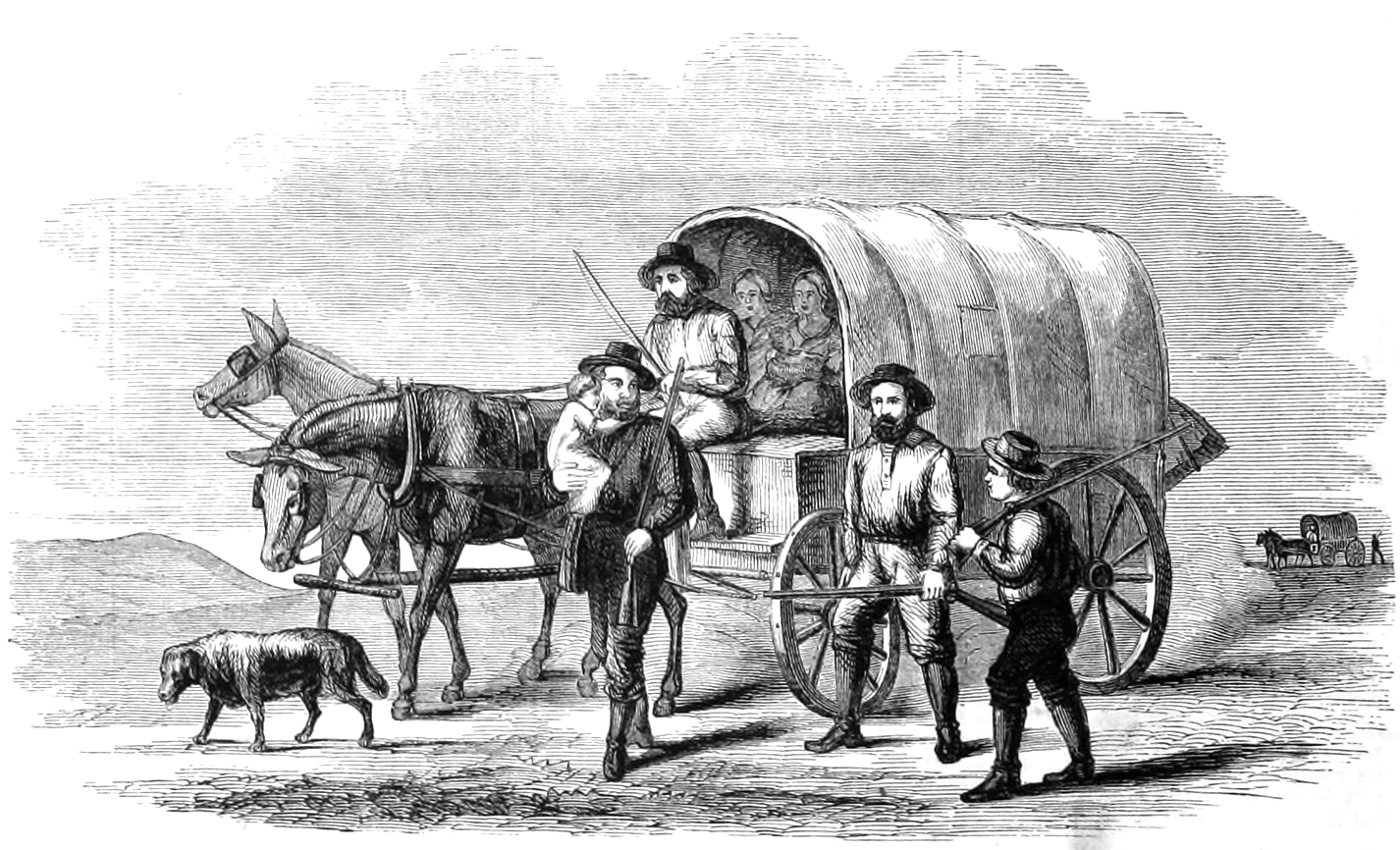
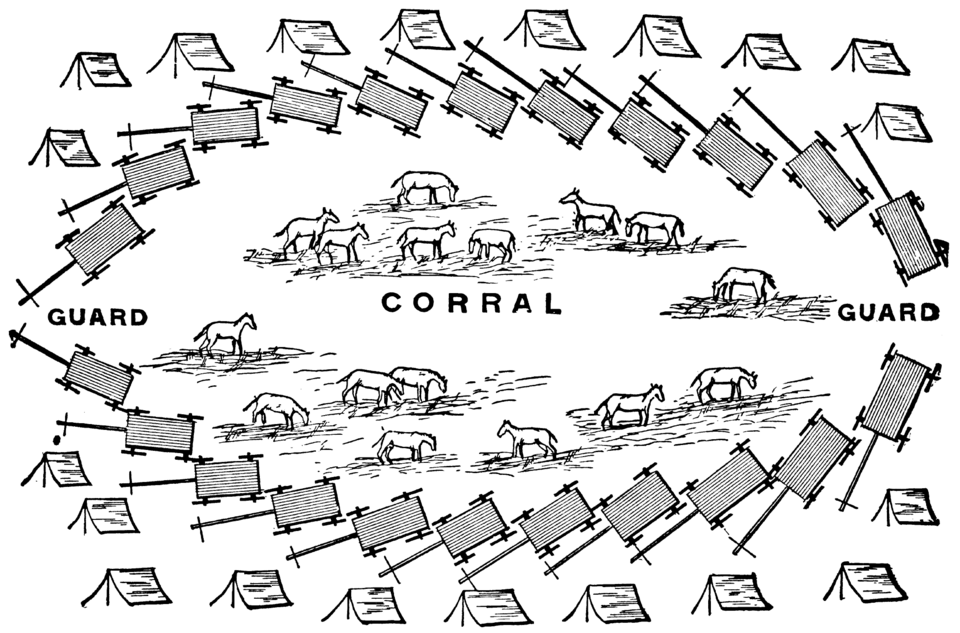
While this is an amazing surviving article, there is even more to the story of how and when it happened as well as what other parts of the past are connected to it. I'll cover more of that next week. You won't want to miss it. You may be surprised at just how many elements of history are wound into this.
Have a great week!
David
Psalm 20:7